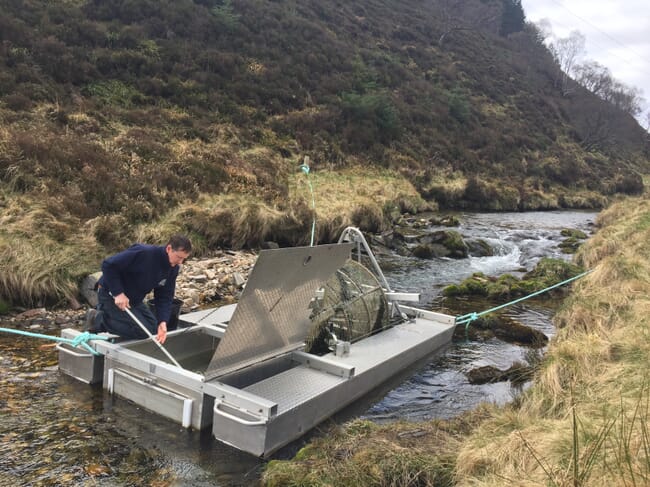Anglers gathered at the River Garry to herald the beginning of the Missing Salmon Project, which hopes to discover why this iconic fish is in such sharp decline, essential if effective measures are to be found to reverse their fortunes.

© Atlantic Salmon Trust
The organisation behind the project, the Atlantic Salmon Trust (AST), announced it is aiming to raise £1 million via crowdfunding to support the tracking project. The marine survival of the wild salmon population has declined by 70 percent in just 25 years.
Executive director of the AST, Sarah Bayley Slater, said: “Salmon have been around for more than 60 million years, but their future looks very bleak indeed. If the decline we’ve seen across the Atlantic and in Scotland continues, the wild Atlantic salmon could be an endangered species in our lifetime.
“In launching the Missing Salmon Project, we are making our stand now and giving our generation a chance to save the species before it’s too late.”

The Missing Salmon Project will supplement the work the AST is carrying out with international partners which identifies and aims to quantify the causes for salmon mortality on their journey from river to sea and back again.
Working with partners across the Moray Firth, scientists are to tag scores of fish in order to determine which factors are likely responsible, with The Missing Salmon Project looking to raise £1 million to pay for the tags and the acoustic receivers that track the salmon’s journey.
Dr Matthew Newton is the tracking co-ordinator for the AST.
“If we’re going to have a meaningful impact on reversing the Atlantic salmon’s decline, we need to tag and track fish on a scale never seen before in Europe,” he said.
“By tagging the fish and tracking their progress from their spawning ground and back again, we’ll be able to pinpoint where fish are being lost – and help identify the causes for their increasingly worrying mortality rates.”
And with global populations of wild Atlantic salmon declining from 8-10 million in the 1970s to 3-4 million fish today, the project will have an international impact.
“Too many times, humanity has acted too late when a species is in decline. We have an opportunity to act now and make a lasting, positive impact so we’d ask everyone with an interest in preserving not only Scotland’s wild identity, but one of the world’s most famous species’ futures, to support this ground-breaking project,” added Dr Newton.
Methodology
The project will involve tagging salmon smolts as they begin their journey from their home river towards the sea. Fish will be recorded as they pass through strategic points – which will help determine how many fish make it to the ocean and where mortality occurs. The tracking project will start in the Moray Firth, where 20 percent of all salmon that leave the UK originate, and the lessons learned will be transferable to other populations of salmon around the UK.




